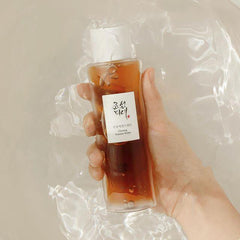
Title: Ginseng Skincare: Embracing Traditional Healing Practices in the Philippines
Introduction:
In the heart of the Philippines lies a treasure trove of ancient healing wisdom, where traditional practices and natural remedies have been passed down through generations. Among these age-old traditions is the art of herbal medicine, deeply ingrained in Filipino culture and celebrated for its holistic approach to health and wellness. In recent years, there has been a resurgence of interest in traditional healing practices, particularly in the realm of skincare, with the integration of ginseng—a revered herb known for its therapeutic properties. In this essay, we will explore the rich tapestry of traditional healing practices in the Philippines and the role of ginseng in skincare rituals, shedding light on the profound connections between culture, nature, and well-being.
I. The History and Evolution of Traditional Healing Practices in the Philippines:
The history of traditional healing practices in the Philippines dates back centuries, rooted in indigenous beliefs and cultural customs. Before the arrival of foreign influences, ancient Filipinos relied on herbal remedies, massage techniques, and spiritual rituals to promote health and vitality. Over time, these practices evolved and adapted, incorporating elements from Chinese, Malay, and Spanish traditions. Today, traditional healing remains a vibrant part of Filipino culture, offering a holistic approach to health that honors the interconnectedness of body, mind, and spirit.
II. Exploring the Role of Ginseng in Filipino Herbal Medicine:
Ginseng holds a special place in Filipino herbal medicine, revered for its myriad health benefits and esteemed as a symbol of vitality and longevity. Known as “luya-luyahan” or “Tongkat Ali” in local dialects, ginseng has been used for centuries to treat a variety of ailments, from fatigue and stress to skin conditions. Rich in bioactive compounds such as ginsenosides and antioxidants, ginseng is prized for its ability to boost immunity, improve circulation, and promote overall well-being.
III. Traditional Skincare Rituals in Filipino Culture:
Skincare has long been an integral part of Filipino culture, with traditional rituals passed down from generation to generation. Herbal baths, massage techniques, and botanical remedies are all cherished practices that emphasize the importance of nurturing both physical and spiritual health. These rituals not only cleanse and beautify the skin but also promote relaxation, stress relief, and inner balance—a testament to the holistic approach to skincare embraced by Filipinos.
IV. The Therapeutic Properties of Ginseng for Skin Health:
Ginseng is renowned for its potent skincare benefits, making it a popular ingredient in modern skincare formulations. Studies have shown that ginseng contains anti-inflammatory, antioxidant, and anti-aging properties that can help improve skin texture, reduce wrinkles, and enhance overall complexion. Additionally, ginseng has been found to stimulate collagen production, promote cell regeneration, and protect against environmental damage—making it an ideal choice for those seeking natural solutions for healthy, radiant skin.
V. Integrating Ginseng into Modern Skincare Routines:
With the growing popularity of natural skincare, there has been an increased demand for ginseng-infused products that harness the power of this potent herb. From cleansers and serums to masks and moisturizers, ginseng skincare formulations offer a holistic approach to skincare that nourishes and revitalizes the skin from within. By incorporating ginseng into their daily routines, individuals can enjoy the benefits of this ancient remedy while honoring their cultural heritage and embracing traditional healing practices.
VI. Herbal Remedies and Botanicals Used in Filipino Skincare:
In addition to ginseng, Filipino skincare is enriched by a wealth of other herbal remedies and botanicals that have been used for centuries to promote skin health. Calamansi, papaya, and coconut oil are just a few examples of natural ingredients prized for their nourishing and rejuvenating properties. When combined with ginseng, these botanicals create powerful skincare formulations that address a wide range of skin concerns, from dryness and dullness to aging and inflammation.
VII. Traditional Healing Wisdom: Balancing Body, Mind, and Spirit:
At the heart of traditional healing practices is the belief in the interconnectedness of body, mind, and spirit—a philosophy that resonates deeply with Filipino culture. By treating the whole person, rather than just the symptoms of illness, traditional healers seek to restore harmony and balance to the individual. This holistic approach recognizes the importance of addressing not only physical ailments but also emotional and spiritual imbalances, promoting overall health and well-being.
VIII. The Cultural Significance of Herbalism in the Philippines:
Herbalism holds a special place in Filipino culture, serving as a bridge between past and present, tradition and innovation. As custodians of this ancient knowledge, Filipinos take pride in preserving their cultural heritage and passing it down to future generations. In a rapidly changing world, herbalism serves as a reminder of the importance of staying connected to our roots, honoring the wisdom of our ancestors, and embracing the healing power of nature.
IX. Nurturing Holistic Health Through Ginseng Skincare:
In conclusion, ginseng skincare offers a unique opportunity to embrace traditional healing practices in the Philippines while reaping the benefits of modern skincare innovation. By integrating ginseng into their daily routines, individuals can nurture holistic health, promote skin vitality, and reconnect with their cultural heritage. As we continue to navigate the complexities of modern life, let us not forget the timeless wisdom of our ancestors and the healing power of nature—a legacy that continues to enrich and inspire us today.
No Comments Yet